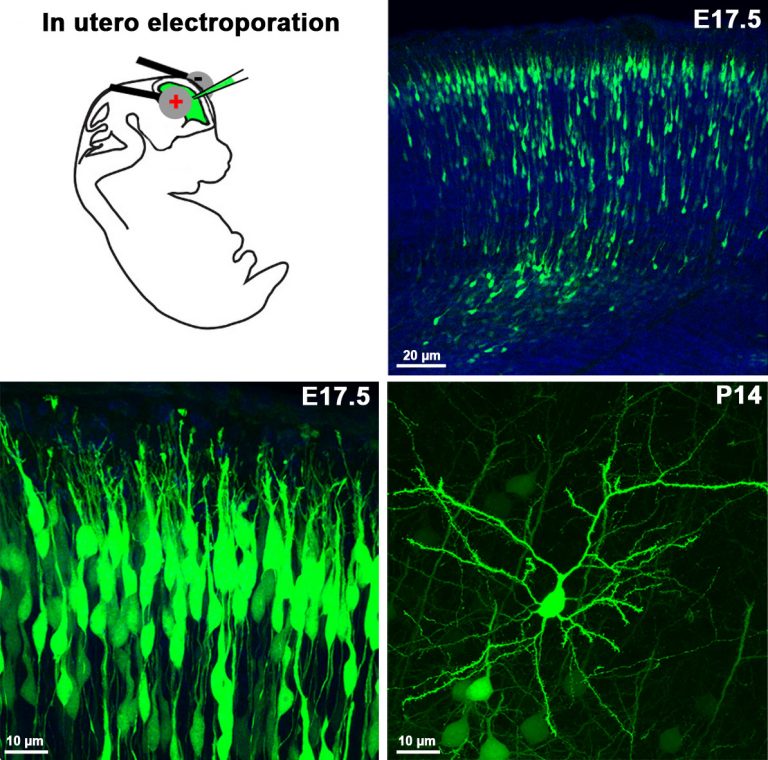In utero electroporation
To label specific neuronal populations or to regulate gene expression levels in given cell types (either by overexpression or by siRNA silencing), in utero electroporation is an emerging approach.
The method's advantages are speed and affordability over the generation of conventional genetically-modified animal models, which are usually slow and very expensive. We use plasmids encoding either the mRNA (gain-of-function) or RNAi (loss-of-function) of the gene to be examined, which is injected into the telencephalic ventricle of E12-E16 embryos, followed by a brief electric pulse train of low voltage (30-50V) applied via electrodes held to the head of the embryos. Upon the direct current, the plasmid will pass into the proliferating ventricular zone precursors then enters into the progeny of these cells (neurons or progenitor cells). When a fluorescent protein-containing plasmid is co-injected, or alternatively a GFP- or mCherry-tagged version of the cDNA is injected, one can easily follow the fate of the transfected progenitor and its daughter cells.







